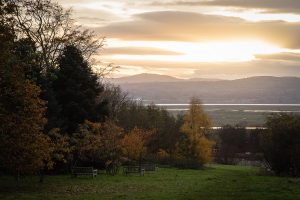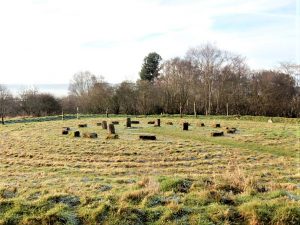Ness Botanic Gardens
Ness Botanic Gardens was born of one man’s passionate interest in plants and his desire to share that interest with others. In 2019 a major investment was announced for Leahurst and Ness Gardens. The Masterplan Estate Strategy includes an appendix document which is available on the website above and also by direct link here.
When the Liverpool cotton merchant Arthur Kilpin Bulley began to create a garden in 1898, part of which he opened to local residents, he laid the foundations of one of the major botanic gardens in the United Kingdom. Bulley died in 1942, and in 1948 his daughter Lois presented the Gardens to the University of Liverpool with an endowment of £75,000.
The only stipulation was that they be kept as a botanic gardens as a practical and fitting tribute to the memory of her father and they have remained so ever since.
When Ken Hulme was appointed Director in 1957 he spent three decades achieving a more natural setting for the plants. The ornamental gardens increased from 2.4 to 18.4 hectares and superb collections of Rhododendrons, Azaleas, Camellias, Cherries and Heathers were established. Set on the banks of the River Dee with breathtaking views across to North Wales, Ness Botanic Gardens boasts international repute with the national collection of Mountain Ash (Sorbus) trees.


Visiting Hours
1 March – 31 October 2022
Gardens 10 am – dusk (last admission to the Gardens at 4.30 pm). Visitor centre, gift and plant shop 10 am – 5 pm. Botanic Garden Cafe 10 am – 5 pm (last orders at 4 pm). Members’ gate 5 pm-dusk
1 November – 23 December 2022
Gardens 10 am – 4 pm (last admission to the Gardens at 3 pm). Visitor Centre, gift and plant shop 10 am – 4 pm. Botanic Garden Cafe 10 am – 4 pm (last orders at 3 pm). Members’ gate closed.
Ness Henge
As a contribution to Liverpool City of Culture 2008, Dr John Hill of Liverpool University used a rope, finger counting, and the sun’s shadow to create a model of Stonehenge. Nesshenge has a diameter of 135 feet (as opposed to 360 feet at Stonehenge). He marked out the positions of all the features with wooden sticks. He orientated the earthwork using the sun’s shadow at midday (the shadow indicating north).
Nesshenge represents the transitional period from the Neolithic to the Early Bronze Age. It incorporates the ‘outlying’ Sarsen stones (the Heel Stone, the Slaughter Stone, the Altar Stone and the four Station Stones). He orientated the henge so that it incorporates several astronomical alignments that occur at Stonehenge and also aligned the henge towards a ‘notch’ between Moel Famau and Moel Arthur. Standing at the Heel Stone on the winter solstice (21 December) one can watch the afternoon winter sun setting between the two mountains.
